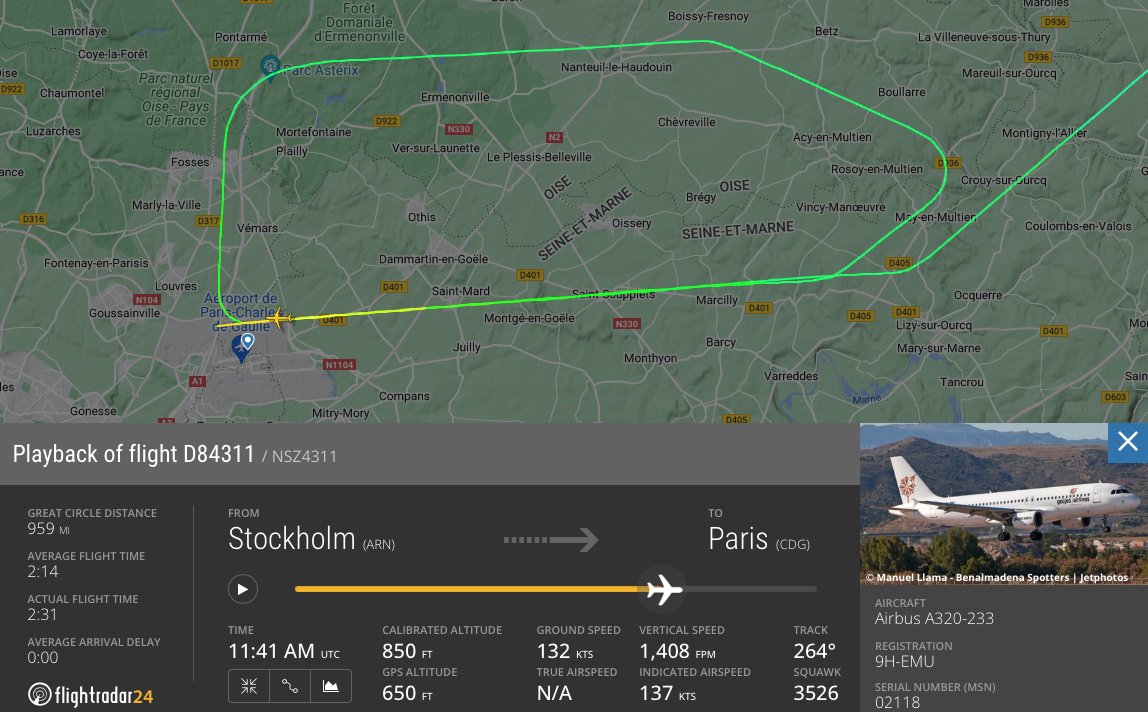On 23rd May 2022, an Airhub Airlines A320-200 operating a passenger flight from Stockholm to Paris on behalf of Norwegian narrowly avoided a crash at Paris CDG. The minimum radio-altimeter height was recorded at just 6 feet above the ground, at 0.8 nautical miles from the end of the runway.
Flight Details
The Airbus A320-200, with registration 9H-EMU, was performing flight D84311 from Stockholm to Paris CDG with 178 people on board, including six crew members and 172 passengers. During its approach to Paris CDG, the weather was poor due to clouds with rain showers, causing limited visibility. The crew also stated that they were in the clouds for the entire approach and experienced moderate turbulence.
Citing bad weather conditions and low visibility, the pilots were cleared for a Required Navigation Performance (RNP) approach to runway 27R. Such an approach requires the pilots to set the correct altimeter setting i.e. a measure of altitude based on air pressure. However, an issue arose after the Intermediate controller at CDG gave an erroneous Altimeter setting twice to the crew members of flight D84311.
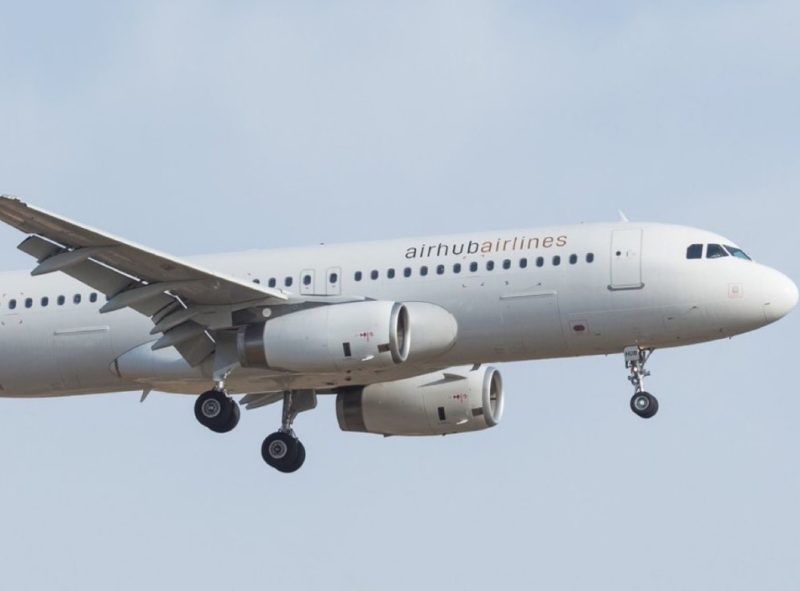
Instead of providing an altimeter setting of 1001 hPa, the controller provided an altimeter setting of 1011 hPa. The difference in the 10 hPa altimeter setting would lead to an approach being carried out 280 feet too low. Although the crew read back the incorrect altimeter setting multiple times and other aircraft were given the correct QNH of 1001 hPa, the error was neither picked up by ATC nor by the crew. As a result, the aircraft was flown below the glide path during the approach.
Here is the conversation between the Intermediate Controller and the pilot of flight D84311:
(*Red Nose is the Norwegian callsign)
CDG Intermediate Controller: “Red Nose 4311, descend … descend 6,000 ft, 1011.”
Flight D84311: “6,000 ft, 1011 … 1 … 011, Red Nose 4311.”
CDG Intermediate Controller: “Red Nose 4311, descend 5,000 ft, 1011, cleared full RNP 27R.”
Flight D84311: “Descend 5,000 feet, QNH 1011, cleared full RNP approach 27R, Red Nose 4311.”
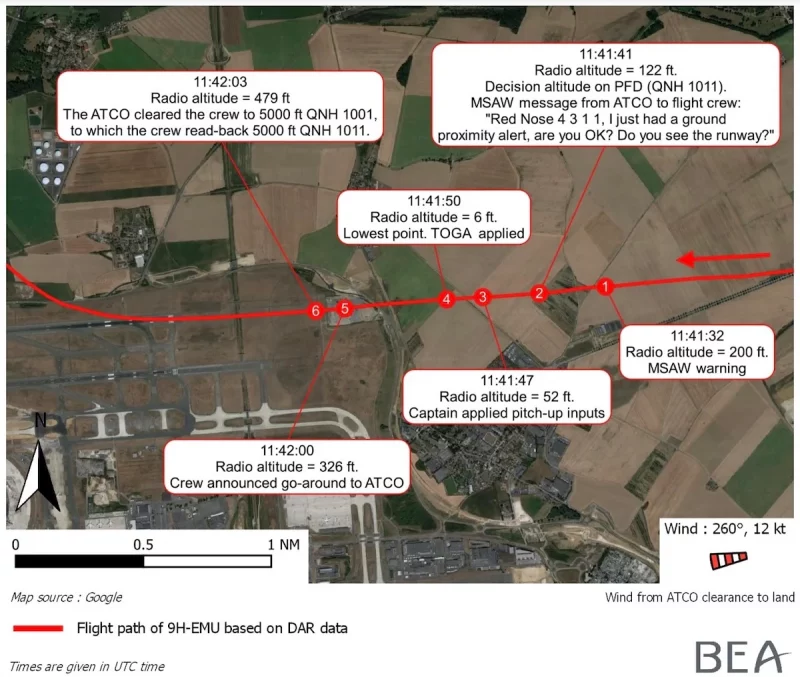
The A320 was cleared to land by the air traffic controller even though it was descending around 280 feet below the descent profile. As a consequence, the Minimum Safe Altitude Warning (MSAW) alarm was triggered on the final approach. Subsequently, the controllers also received a ground proximity alert. Right away, the controller checked on the pilot saying, “Red Nose 4311, I just had a ground proximity alert, are you okay? Do you see the runway?”
While the controllers were passing the message to the pilots, a second MSAW was also triggered and the crew stated that they did not hear the radio communication. The pilots further clarified that they did not hear any radio-altimeter Auto-Callouts other than the callouts at 2,500 feet and 1,000 feet. The crew aborted the approach at a low altitude, without having acquired external visual reference. The minimum radio-altimeter height was recorded at six feet above the ground. Yes, six feet! The aircraft was 0.8 nautical miles from the end of the runway.
According to the preliminary report released by France’s Bureau of Enquiry and Analysis for Civil Aviation Safety (BEA), no Terrain warning (TAWS) was recorded during the approach.
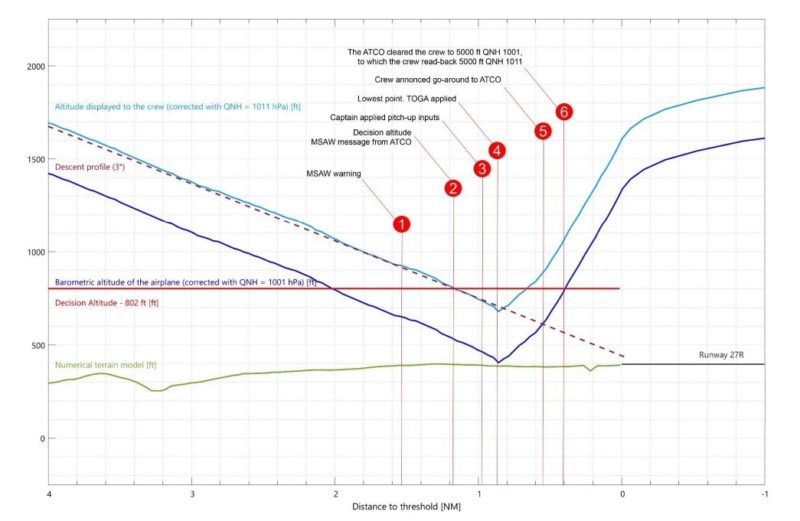
The Second Approach
After performing the last moment go around, the pilots positioned for a second approach. However, this time also the correct QNH was not provided to the crew members and the pilots were positioned for another approach without cross-checking the altimeter setting from other sources like a METAR or ATIS, expecting the information provided by the controller was accurate.
Once again, the pilots started their approach 280 feet too low. As a result, the MSAW alarm activated again around 3.1 nautical miles before the runway threshold. The crew asked the controller if the approach lights were on while they were on approach and the controller informed that they were. This time as well, the controllers received a ground proximity alert.
However, this time the pilots noticed that they were too low as the cloud coverage wasn’t as severe as before. Thus, the pilots performed a visual approach. They applied a pitch-up to correct their trajectory and continued for a safe landing without any further incident some 16 minutes after the go-around.
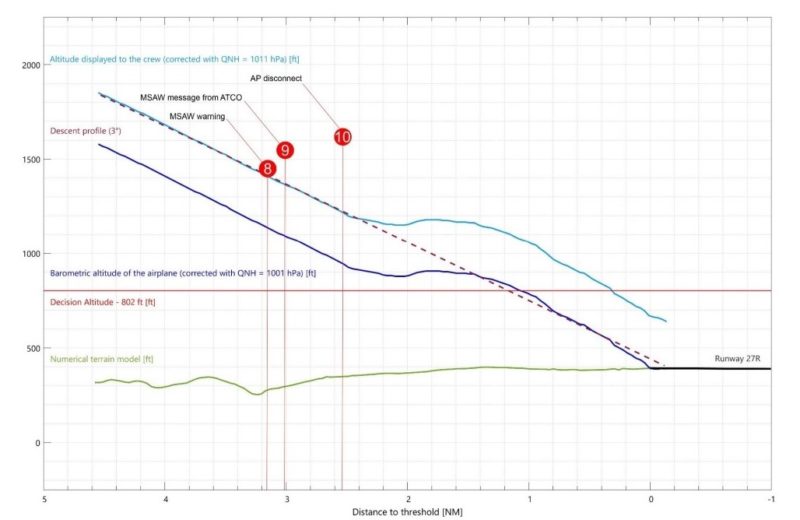
The French BEA rated this occurrence as a serious incident (category Controlled Flight Into Terrain) and opened an investigation, which is still ongoing. The preliminary report was released by the BEA on 11th July.
Feature Image via FlightRadar24


